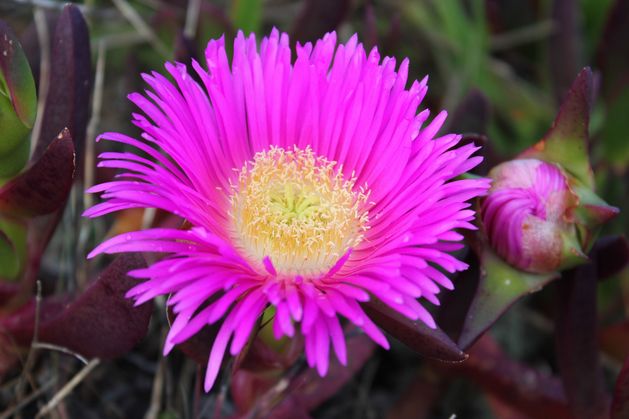By analysing over 1,700 photos from social media and citizen science platforms, scientists at the University of Galway discovered that the colourful carpobrotus plant – often seen brightening up holiday photos – flowers for much longer in regions it has invaded than in its native South Africa.
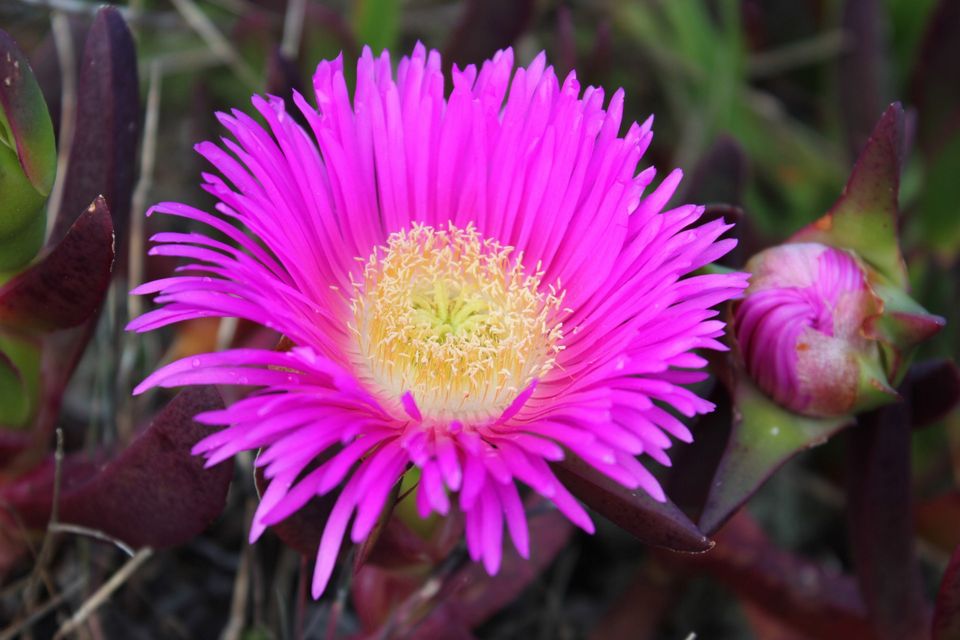
Carpobrotus flower in the Tower of Hercules Natural Reserve, A Coruna, Spain. Photo: Jonatan Rodriguez, University of Santiago de Compostela.
Today’s News in 90 Seconds, Monday, October 13
Biologists believe that this extended blooming season in invaded locations could be helping carpobrotus dominate coastlines where it likes to reside, and outcompete native plants living there.
New findings reported in the journal Ecological Solutions and Evidence, by scientists in Galway and elsewhere, can help authorities better design strategies to control carpobrotus.
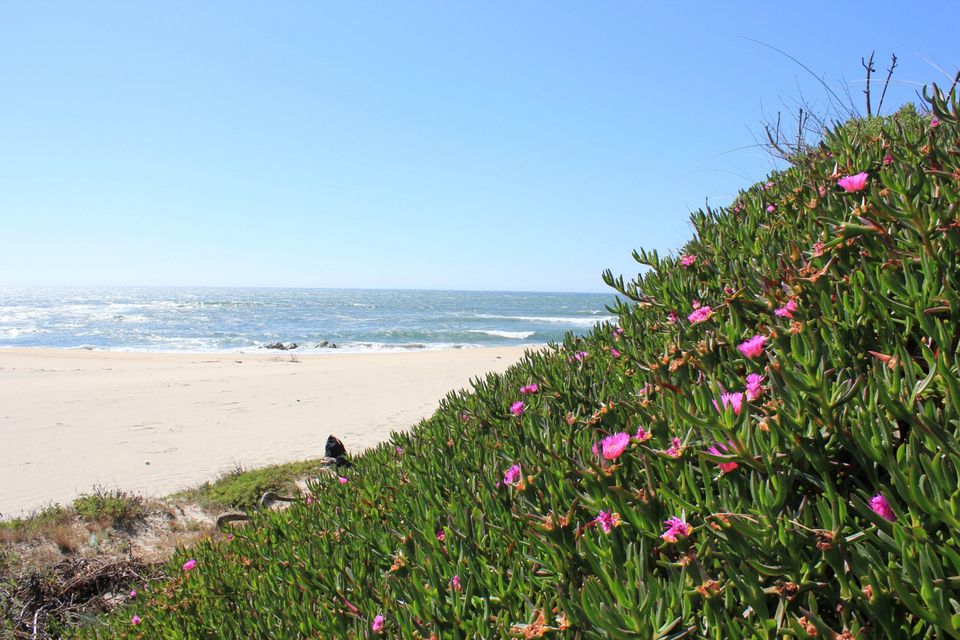
Carpobrotus invasion at Duna do Caldeirao, Vila Praia de Ancora, Portugal. Photo: Jonatan Rodriguez, University of Santiago de Compostela.
The use of photos from Instagram to monitor species is called iEcology, and its helping scientists control carpobrotus in the many places where it is now smothering coastal ecosystems including California, the Mediterranean, Britain and Ireland.
“We realised thousands of people were unknowingly documenting these invasions in the background of their beach selfies and cliff-top sunset photos,” said Dr Susan Canavan, lead author of the new research, from the College of Science and Engineering at the University of Galway.
“This gave us observers across the globe, from California’s Big Sur to New Zealand’s coastlines to Portugal’s tourist beaches.”
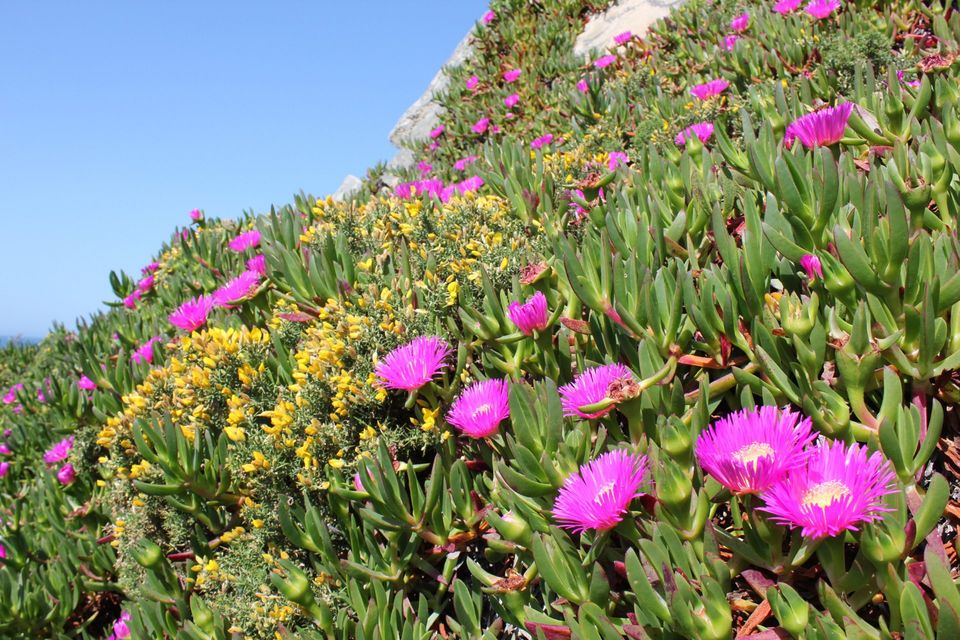
Carpobrotus plants competing for space and pollinators with the native gorse Ulex europaeus in the Tower of Hercules Natural Reserve, A Coruna, Spain. Photo: Jonatan Rodríguez, University of Santiago de Compostela.
A single carpobrotus plant can cover up to 50 sq m, and suffocate everything lying beneath it.
The plant changes soil chemistry and monopolises pollinators, at the expense of native plants, by powerfully attracting them with its showy leaves.
The study also demonstrates how the digital age is transforming ecological research
The international team of scientists in Ireland, the Czech Republic, Spain, Australia and the US, discovered that while in its native South Africa carpobrotus has a short flowering peak, in regions it invades it blooms for an extended period, given it a reproductive advantage over the local species it replaces.
“The study also demonstrates how the digital age is transforming ecological research,” Dr Canavan said.
“What began as vacation photos and nature observations has become a powerful tool for tracking biological invasions.”
These plants are notoriously difficult to control because they spread both by seed and by fragments
For coastal managers battling these invaders, the findings offer practical guidance, by revealing peak flowering times in the invaded regions, the research will help them to time removal efforts to prevent seed production.
“These plants are notoriously difficult to control because they spread both by seed and by fragments,” Dr Anna Novoa, co-author of the research and project lead from the Institute of Botany of the Czech Academy of Sciences, said.
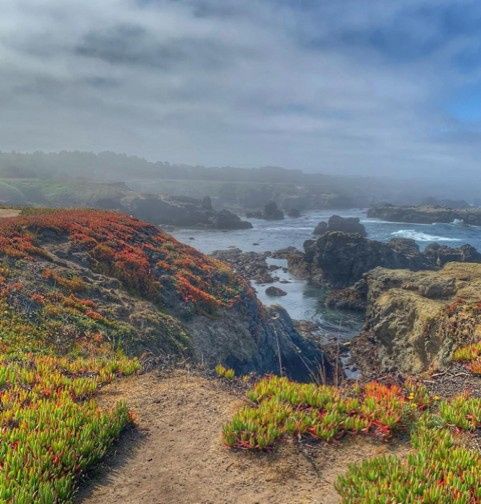
Carpobrotus growing at Mackerricher State Park in California, USA. Photo: noemi_anne_mdr/Instagram.
“Even a small piece can regrow into a new colony. Knowing exactly when they flower in each region means we can strike when they’re most vulnerable, before they produce the thousands of seeds.”
Dr Novoa said, if nothing is done to combat carpobrotus in Ireland, there will be “important declines in native coastal diversity” and it “could bring some species to extinction”.
